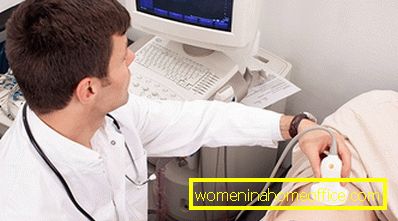Back pain in the kidney area
Lower back pain is a common problem that nearly 90% of the world's inhabitants face at least once in their lives. Why does the back in the kidney area hurt? How to eliminate pain to improve the quality of your life?
Back pain in the kidney area: causes and possible diseases

Pain does not appear without a cause: they are provoked by various pathological abnormalities and external factors. Causes of pain in the kidney area are divided into two types:
- pointing to muscle contractures or diseases of the bones and nerves of the spine;
- resulting from pathological disorders of the abdominal cavity, small pelvis and chest.
Causes of lower back pain associated with the spine
The spine is a column of bony vertebrae, in the middle of which the spinal cord passes. This is a peculiar axis of our body: a set of elastic muscles is attached to the spine, providing flexibility and stability of the body. Between the vertebrae are intervertebral discs, which play the role of a shock absorber. Violation of the integrity of the discs, tumors on them and muscle spasms in the lower back lead to pinching of the nerve endings, with the result that pain appears in the lumbar spine.
In this case, we can distinguish pathologies such as:
- Herniated disk (at the bottom of the spine). The protrusion of the disc and the hernia lead to an increase in pressure on the spinal nerves, thereby causing pain in the right and left side of the lower back.
- Spinal curvature is a common cause of back pain. With the curvature increases the load on the lower vertebrae, which leads to pain.
- Muscle contracture of the lower back muscles. It can be caused by air pressure drops.
- Spinal fracture as a result of injuries and age-related changes.
- Lumbar osteochondrosis. It is observed in people leading a sedentary lifestyle, and is associated with pinching of the nerve roots in the lumbar region, swelling and irritation of the muscles and ligaments.
- Spondylosis and spinal arthritis in the elderly. It is associated with dehydration and a decrease in the volume of intervertebral discs, which leads to inflammation and fragmentation of the nerve roots and causes pain in the upper part of the buttocks.
- Inflammation of the sciatic nerve - sciatica. Occurs due to clamping of the nerve between the vertebrae or the sacrum and the pelvic bones. This disease is accompanied by severe pain and blockage in the lumbar region.
Causes of back pain in the kidney area associated with other pathologies

Lumbar pain can be caused by impaired renal function, gastrointestinal tract, gynecological problems, viral diseases, hormonal changes and psychological disorders.
Gastrointestinal disorders include:
- chronic pancreatitis;
- gastroenteritis;
- irritable bowel syndrome;
- appendicitis;
- constipation;
- diverticulitis;
- colorectal cancer.
Urological problems include:
- cystitis;
- urethritis;
- prostatitis;
- urinary tract infections;
- prostate carcinoma;
- stones in the kidneys;
- renal cysts.
Gynecological diseases:
- inflammation of the pelvic organs;
- vein thrombosis and ovarian cysts;
- malignant neoplasms in the genitals;
- endometriosis;
- ectopic pregnancy;
- premenstrual syndrome.
Pregnancy can also cause back pain in the kidney area. This is primarily due to changes in the female body. Weight gain and an increase in the size of the uterus change the center of gravity of the woman, which creates an additional load on the muscles of the lower back and the pain is felt.
Back pain can be observed both after sleep and throughout the day. If after sleep your back hurts in the area of the kidneys, then, most likely, this is due to the peculiarities of your night rest. Long, more than two or three days, and acute pains that accompany high fever, stomach cramps, painful sensations behind the sternum, can indicate a serious illness. Then you need to consult a doctor to determine the diagnosis.
Diagnosis and treatment

Diagnosing pain in the kidney begins with a survey and examination of the patient. The symptoms and the time of their manifestation are determined, which indicates the nature and form of the course of the disease. Laboratory tests of blood and urine are conducted, X-ray examination, myelography, magnetic resonance imaging and ultrasound are prescribed.
Only a set of measures allows you to find out whether the back or kidneys hurt, or pain caused by other pathologies. If the symptoms and the diagnosis correspond to the pathology associated with the spine, or are neurological in nature, the patient is prescribed drugs to anesthetize the lumbar region, restore blood circulation and nerve tissue. For this purpose, funds are used in the form of tablets, ointments, gels or injections. Manual therapy may also be prescribed.
If intervertebral hernia is diagnosed, then, possibly, surgical operation will be performed. To relax the spine and the amniotic muscles, sleep on elastic mattresses is recommended, with rollers under the legs. If back pain is associated with kidney pathology, then appropriate therapy is prescribed depending on the particular disease.
The treatment of such diseases is carried out by means of drugs and the use of physiotherapeutic procedures. Along with this, the patient may use alternative means of medicine, having previously consulted with his doctor.
First of all, it is necessary to think about lifestyle changes: give up bad habits, eat right, use appropriate diets, and exercise therapy. Be healthy!